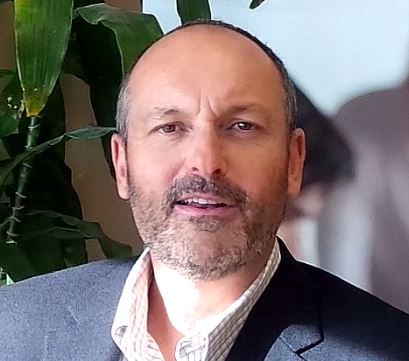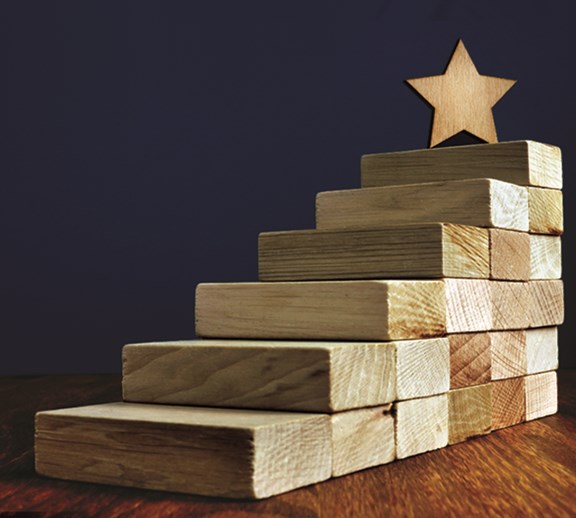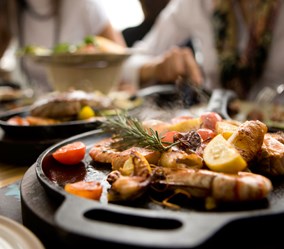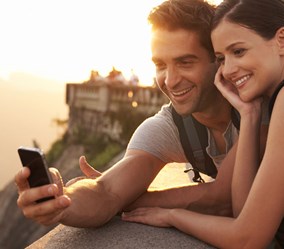Inspiring Salespeople Through Incentive Travel
Written by: Andrew Clark
(View Author Bio)

What inspires salespeople and why does inspiration matter?
Based on a recent study by psychologists Todd M. Thrash and Andrew J. Elliot published in the Harvard Business Review, inspired people are much more efficient and productive during the workday. In fact, they spend less time pausing and more time getting down to work. There is also a meaningful impact on goal setting, progress, and attainment of goals.
At BI WORLDWIDE Canada (BIW), we know through our research and many years of executing goal-driven sales incentive programs that those who set goals and in particular their own goals are way more likely to achieve them.
What is also interesting is that Thrash and Elliot learned that the relationship between inspired people and goal setting is reciprocal. In other words, goal progress predicted future goal inspiration. This isn’t the first time we have run across the concept of reciprocity. In our New Rules of Engagement global employee research, we also saw that the investment made in inspiring employees had a direct correlation to the intensity of their work and their commitment to the organization.
Inspired people were more creative, had a stronger sense of belief in their own ability, higher self-esteem were more optimistic, and were higher in mastery of work, absorption of ideas, and competence.
This begs the question of what inspires employees?
We learned that it’s not more cash. A bonus cheque is great. We all like them, but it’s not inspirational or memorable. It simply is absorbed into our bank account – never to be seen again.
When looking at employee inspiration and rewards and recognition, the number one motivator is travel. We recently completed an in-depth study to investigate the competitive value of award travel as a recognition strategy for salespeople with a total of 500 respondents, representing five industry sectors.
With the generational shifts in the marketplace, we were specifically looking to understand:
- Current use and implementation of travel awards for salespeople
- Motivations for participation in travel award programs
- Attitudes and perceptions toward group and individual travel awards and preferences for travel award experiences
Here are six key things we learned:
- When describing the best possible vacation experience “unplugging“ was favoured four times more than any other activity choice. There was a day when we thought we should program every moment of a group incentive trip.
- In most cases, when given a choice between individual or a group travel award, 90 percent of salespeople are more highly motivated by individual travel. There is some generational bias with Millennials and Gen-Xers more likely to indicate this preference.
- It’s not just about the trip. 93 percent of salespeople are motivated by incentive travel as it allows them to be recognized by their company and peers. And 91 percent found motivation in their friends and family recognizing the travel award earned as a testament to their success.
- More time as an individual, salespeople preferred group travel to be three to four days and individual five days or more.
- Freedom to choose. We see this in many areas of our business. Personal choice is simply more engaging. 93 percent wanted a choice in destination, 88 percent timeframe, 87 percent activity, and 87 percent duration of the trip.
- Keep business in the office. 84 percent are motivated by group travel that only includes social and leisure activities. Interest declines noticeably if you add a meeting component to the event.
Why is travel so motivating?
The answer lies in the science of applied Behavioural Economics (BE). How rational thought and emotions combine within a particular culture to drive decisions and behaviour. In fact, 77 percent of human behaviour is driven by emotion. Several powerful drivers make incentive travel the number one motivator. So how do we use BE to design and execute the incentive programs we develop? With three key strategies:
- Engagement strategies to communicate, educate, motivate, and update the audience. Tell the salesperson what you want to do. We tend to make decisions using the initial information provided. “Anchoring bias” and “framing bias” how things are presented determine how people will react. Learning is a key part of engaging an audience. At BIW we believe strongly that learning and engagement drive performance. Do they have the necessary skills? As humans, we tend to rely on “heuristics” rules of thumb, experience, shortcuts, and tricks of the trade to help solve problems or to help make decisions. The immediate question a salesperson will ask is “What’s in it for me?” People do something because they will be rewarded for doing it, known in BE as “extrinsic motivation”. A study conducted by Ran Kivetz and Itamar Simonson proved that people respond better when they believe their situation is unique and they have a chance at success. Referred to as “idiosyncratic fit”, if participants don’t fit, they will not engage in a loyalty or incentive initiative. And of course, participants will want to know, “How am I performing?” This is known as “relativity bias”. People put a value on something by comparing it to something else.
- Incentive design with proven concepts and principles to elicit desired behaviours. We mentioned the impact of goal selection earlier. There are many theories to encourage people to embrace goals and finish strong. A powerful example is “goal gradient theory”. The closer people get to a goal, the more effort they put into meeting it. Think about a marathon runner. What motivates them to sprint at the end? Often people must consider the risk vs. the reward when committing to personal goals. Unframed or unlimited choices are difficult to manage. We use “choice architecture” to help people make the best choices by offering carefully chosen, limited options. Get everyone moving. Don’t limit the audience by focusing on only the top performers. Not everyone performs at the same level; however, everyone can contribute to incremental success. “Move the middle” by analyzing team performance and creating goals that are relevant to the individual. The bottom 20 percent need onboarding and training. The middle 60 percent represent a huge opportunity and need motivation and training. You likely know the top 20 percent of your team well. The very top of this group are regulars on your incentive trips – they need inspiration and recognition. An interesting concept related to goal selection and achievement is that we actually feel the pain of loss more strongly than the pleasure of gain (“loss aversion”). Think of it like this. If you found a hundred dollars on the street you would be pretty happy. If you lost a hundred dollars relatively speaking you would be twice as unhappy as when you found the money. Known as the “N-effect”, using leaderboards and stack ranking performance can really drive competition and performance. Comparing performance with that of any given target fuels the motivation to compete.
- Hedonic rewards to stimulate visualization and evoke emotions. Travel—and increasingly today—experiences are the biggest driver of behaviour change. According to research conducted by Expedia and The Centre for Generational Kinetics, 74 percent of respondents valued experiences over products of things. Good information for those in the incentive travel business. You need a strong assortment of experiences for people to choose what is most meaningful to them. When we look further into the appeal of travel and experiences, some other BE principles really stand out and reinforce the impact on the recipient. When someone qualifies for the award they experience something known as the “dopamine effect”. The “rush” people feel after something good happens. Recognition and rewards help people feel better about the work they are doing (“subjective well – being”). Rewards also separate wants from needs so a participant can have the experience they want. The good news for the employer is that the impact of travel and experiences is extended beyond the actual trip. The concept of “re-consumption” means winners are reminded of how they earned the award by performing well and achieving company goals and objectives. There is also a big difference between bragging about your cash bonus and sharing the experience that you have had and how you earned it with your colleagues and friends. It’s called “sociability”. The great thing about an incentive travel award is they are typically at destinations that people are unlikely to spend their own money on (“justifiability”). As a reward trip, I don’t have to ask the question “Can I really afford it?” As humans, we are always looking to take it to the next level, experience the latest and greatest destination, and the next big thing. It’s known as the “hedonic treadmill”.
People change their behaviour for two reasons. They have to or they want to. And in reality, we are not as rational as we think. Emotion trumps reason. Don’t leave sales success to chance. Every time a salesperson on your team is offered a new incentive or opportunity, they ask themselves two questions to determine if the opportunity “fits” them:
- Do I believe I have an advantage over others in the program?
- Is it worth the effort?
Use the power of behavioural science and incentive travel to:
- Inspire your entire team
- Change behaviour
- Create a high performing culture
- Maximize performance
- Deliver measurable business results
Let us make your next travel reward program the one your salespeople will remember.


















